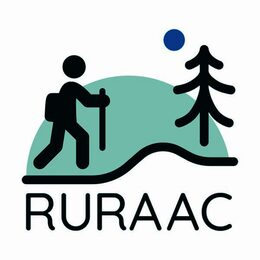Toolbox — For Training and Youth Work
All new tools in your inbox: Be the first to know about new tools for learning with our e-mail notifications.
Manual
Promoting social inclusion of people with intellectual disability in rural areas
People with intellectual disability in rural areas tend to face even more difficult challenges than their peers in urban areas, due to a lack of support services and lack of accessibility, which can be one of the key barriers to their independent living.
Aims of the tool
- To develop the skills of educators working with adults with DI and those working in outdoor education on the topic of AAC.
- To promote the empowerment of people with DI through the co-design of AAC materials.
- To disseminate the results in the local communities.
Description of the tool
The general objective of the “ RURAAC: Alternative Augmented Communication for rural Areas” project is to promote the social inclusion of PID in rural areas by using alternative augmentative communication (AAC) in outdoor experiences and use of local natural heritage. AAC is a set of strategies and tools to help people who have communication difficulties, for example due to an intellectual disability. Although the RURAAC project focuses on people with intellectual disabilities, AAC materials can make natural heritage sites more accessible for everyone.
Although there are many good practices in the field of accessibility of cultural sites, not enough has been invested in the enhancement and accessibility of natural heritage, which, according to the UNESCO definition, is part of the World Heritage.
RURAAC aims to promote the social inclusion of PID through a participatory approach focused on the design of AAC material for the promotion of natural assets.
In the framework of the project, a set of training modules for educators with a specific focus on the promotion of natural assets has been produced. The production of this Booklet has been developed in two main phases:
1. the needs analysis phase: the research carried out by project partners aimed at exploring the training needs analysis of educators (both educators of people with intellectual disability and educators active in the field of outdoor) on the topic of AAC for heritage promotion.
2. the development of training material phase: our Booklet has been designed to equip the readers with the knowledge, skills and competencies needed to support co-design and PID engagement for designing accessible material. Being addressed to both educators of PID and educators/experts in the field of outdoor education, this document aims to provide theoretical and practical activities which could help contribute to the social inclusion of PID in rural areas by using AAC in outdoor experiences and leveraging local natural heritage.
The Booklet is available here (https://www.trekkify.it/work/ruraac/) in EN, IT, LV, BG.
Available downloads:
Disclaimer
SALTO cannot be held responsible for the inappropriate use of these training tools. Always adapt training tools to your aims, context, target group and to your own skills! These tools have been used in a variety of formats and situations. Please notify SALTO should you know about the origin of or copyright on this tool.
Tool overview

http://toolbox.salto-youth.net/4455
This tool is for
- Educators of people with intellectual disability. - Educators active in the field of outdoor.
and addresses
Social Inclusion
It is recommended for use in:
Strategic Partnerships
Behind the tool
The tool was created by
Consortium of the "RURAAC: Alternative Augmented Communication for rural Areas” project - Nr.2023-1-IT02KA210-ADU-000152145
in the context of
Erasmus+ "RURAAC: Alternative Augmented Communication for rural Areas” project - Nr.2023-1-IT02KA210-ADU-000152145
The tool has been experimented in
International training, national pilot action
The tool was published to the Toolbox by
Trekkify Sport Association (on 30 September 2025)
and last modified
23 September 2024
Comments
No comments have been posted yet.
If you want to comment on this tool, you need to be signed in with your MySALTO account. Sign in now